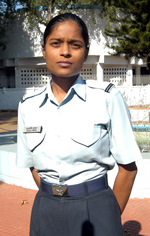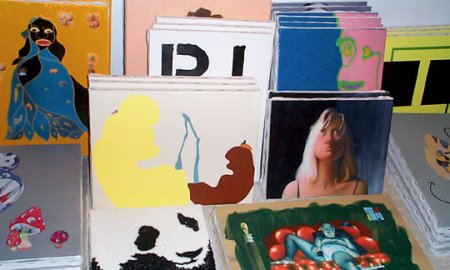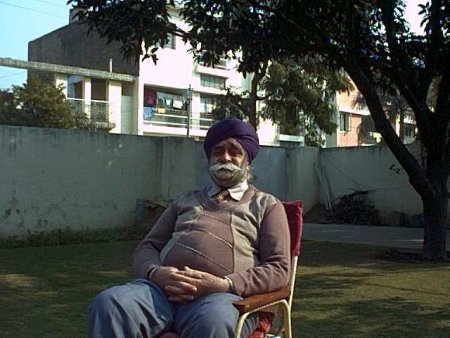The Snow Man
by Wallace Stevens
One must have a mind of winter
To regard the frost and the boughs
Of the pine-trees crusted with snow;
And have been cold a long time
To behold the junipers shagged with ice,
The spruces rough in the distant glitter
Of the January sun; and not to think
Of any misery in the sound of the wind,
In the sound of a few leaves,
Which is the sound of the land
Full of the same wind
That is blowing in the same bare place
For the listener, who listens in the snow,
And, nothing himself, beholds
Nothing that is not there and the nothing that is.
1. Verbs: For a poem that is essentially about standing still, there are quite a number of active verbs, suggesting a play between activity and passivity. Through his verbs, Stevens makes the visual and aural perception of nature (which might well be understood as passive) into a highly intentional act. The poem opens with the observer in the snow, taking in the sharp visuals of a snowy winter day. But there is a shift after the semi-colon in the third stanza (the poem’s grammatical and conceptual hinge), first towards the land, and then back to the speaker. The last stanza has two verbs, one associated with sound (“listens in the snow”), and the second with sight (“beholds”), even as it negates (twice) the object on view (“nothing that is not there and the nothing that is”).
2. Nature described: There are parallels running throughout the poem in the descriptions of nature, which are first positive if remote (“crusted with snow”; “shagged with ice”), and then associative and negative (“sound of the wind”; “sound of a few leaves”; “sound of the land”; “same wind”; “same place”). The “sound of…” and “same…” phrases in the third and fourth stanzas are all in some sense echoes or reverberations of events that are never directly described in the poem. They are like pronouns without an antecedent, and they are all versions of one another (the “sound of the land” must logically also be the sound of the wind, since nothing else in nature on a still winter day would make noise).
3. Human mood/being/nothingness: As is relatively common in some of Stevens’ more famous poems, there is a play in “The Snow Man” between a feeling human consciousness (who experiences winter as “misery”), and a purely abstract perceiving entity that is utterly free of any emotional distortion (i.e., that sees "nothing that is not there"). The perceiving self and nature in its bareness and remoteness reflect each other directly: both as stillness and “nothingness.”
There is a grammatical trick of the poem in its double-negatives, and a conceptual trick involving a doubling of the observer (especially in the second half of the poem). One must have a “mind of winter . . . not to think/ of any misery . . . in the sound” of the snow and the nothingness of winter. The poem has so many subordinate clauses that it’s a little unclear whether listener in the last stanza is the same as the observer who first appears in the first. But of course they are – they must be – one and the same “snow man.” (Incidentally, it makes little sense to me to read the "snow man" in the poem as literally a snow man made of three big balls of snow. The snow man is a sentient being cogitating on the snow. I read the title of the poem as a comment on the human imaginative tendency to anthropomorphism, our tendency to populate the nothingness of winter with crude sculptural images of ourselves.)
* * * *
Those are the naive statements. As mentioned above, UIUC has excerpts from about a dozen relevant critical takes on "The Snow Man," many of which cover similar ground. Check them out; I was impressed by Anthony Whiting and Kenneth Lincoln. The opening of the Lincoln excerpt is especially sharp and compelling:
"The Snow Man" is one long sentence in five oddly rhymed tercets, crystallized as verse. Like Frost's image of ice melting on a stove, the poem reveals itself as it slides along, warmed dangerously by human touch. The lesson is clear: leave a snow man alone, and it exists for itself, unchanged; touch the snow, and the artifice goes away, as it goes along. An object measures differently in motion than at rest, variously cold and hot: watch it disappear. Instead of the expected iambic opening ("I placed a jar"), the poem begins impersonally, with a tentative trochee, almost spondaic, "One must have a mind of winter." Right away, reverse field, the poem catches us in metric crux ("the trochee's heave," Pound said). A leveling cold serves to brace entry and numb stresses into anapests, even spondaic trochees: "and the boughs / Of the pine-trees crusted with snow."
And it just goes from there, all good.
[Cross-posted at The Valve]

 Don't even think about claiming sexual harassment if you're a woman in the Indian Air Force. First, your charges will be dismissed. Then, you'll be put in jail, "for your own protection." And finally, you'll be court-martialled on trivial charges, and convicted by a jury that, to add insult to injury, includes two senior women officers (one of whom is Air Marshal Padmavati Bandyopadhyay, the highest-ranking female officer in the Indian military).
Don't even think about claiming sexual harassment if you're a woman in the Indian Air Force. First, your charges will be dismissed. Then, you'll be put in jail, "for your own protection." And finally, you'll be court-martialled on trivial charges, and convicted by a jury that, to add insult to injury, includes two senior women officers (one of whom is Air Marshal Padmavati Bandyopadhyay, the highest-ranking female officer in the Indian military). 
